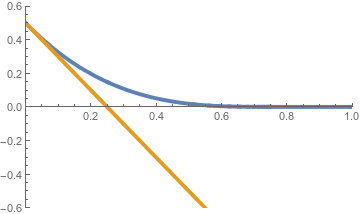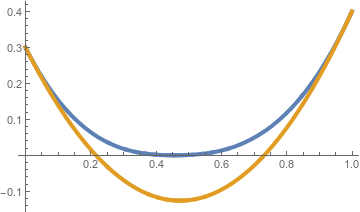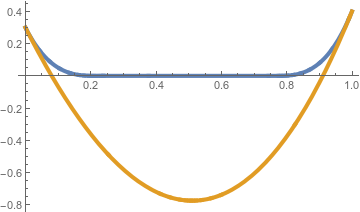Sample path large deviations and concentration
We take our measure to be of the form
with boundary conditions imposed at
.
Define the space
and the rate function
where and
We then obtain the following:
Note that this theorem is for the Dirichlet boundary, with Gaussian potential. The wetting in this theorem imposes difficulties as our minimisers will have to change if there is a large initial downward gradient with a starting point near the origin. A few examples of how wetting changes minimisers is shown below. The orange lines represent a typical minimiser without wetting, and its corresponding minimiser with wetting is shown in blue.



The proof of this theorem involves a technical lemma which we state without proof
The main difficulty in the proof of the theorem is when the boundary values are zero. This introduces a technical problem that open sets in the space of continuous fuctions consistent with these boundary values contan functions which take negative values. The key lemma is used in the proof to 'lift' our boundary values away from zero and overcome this difficulty.
